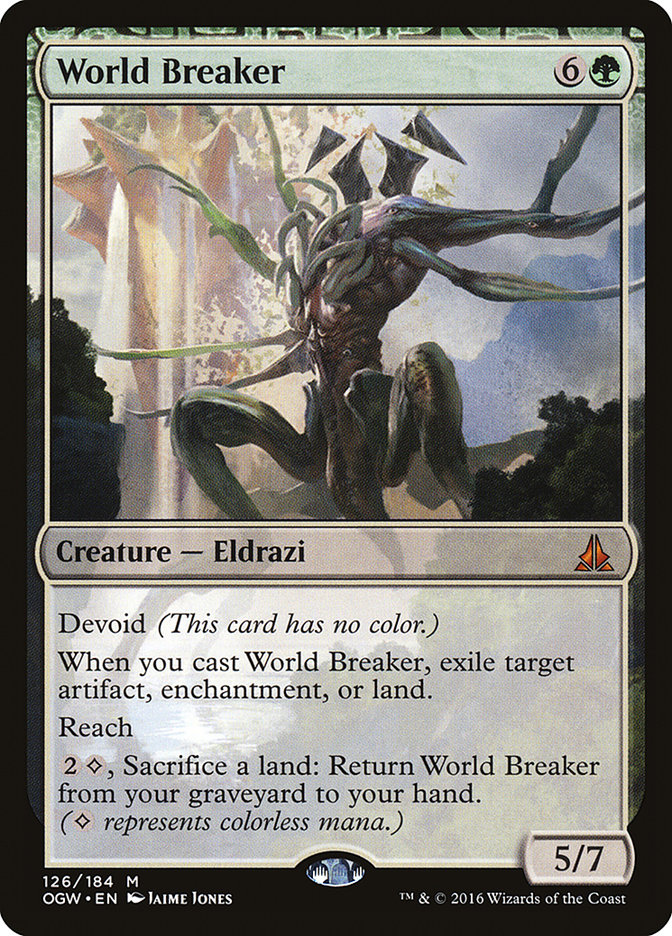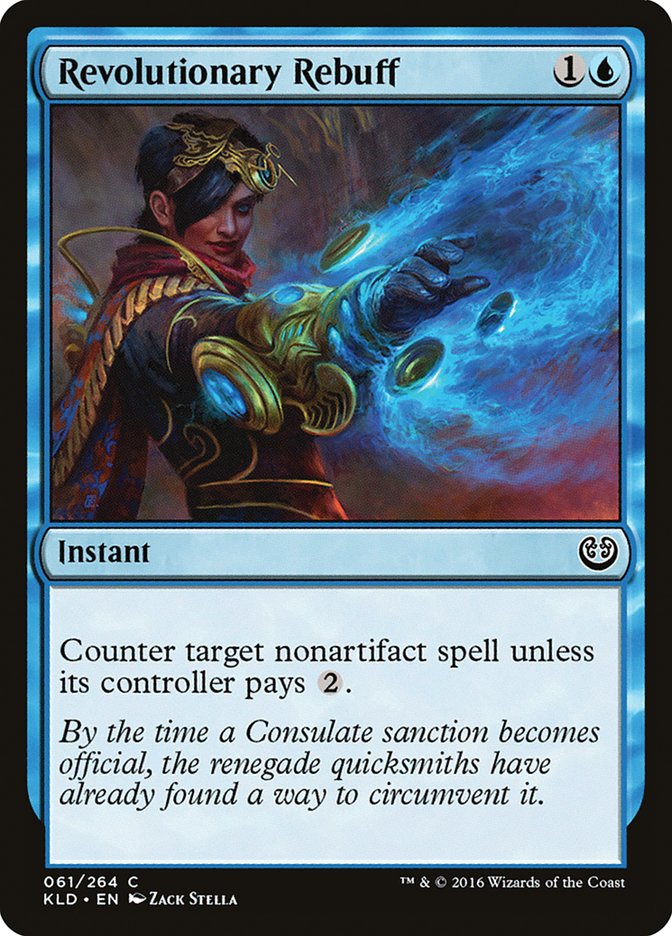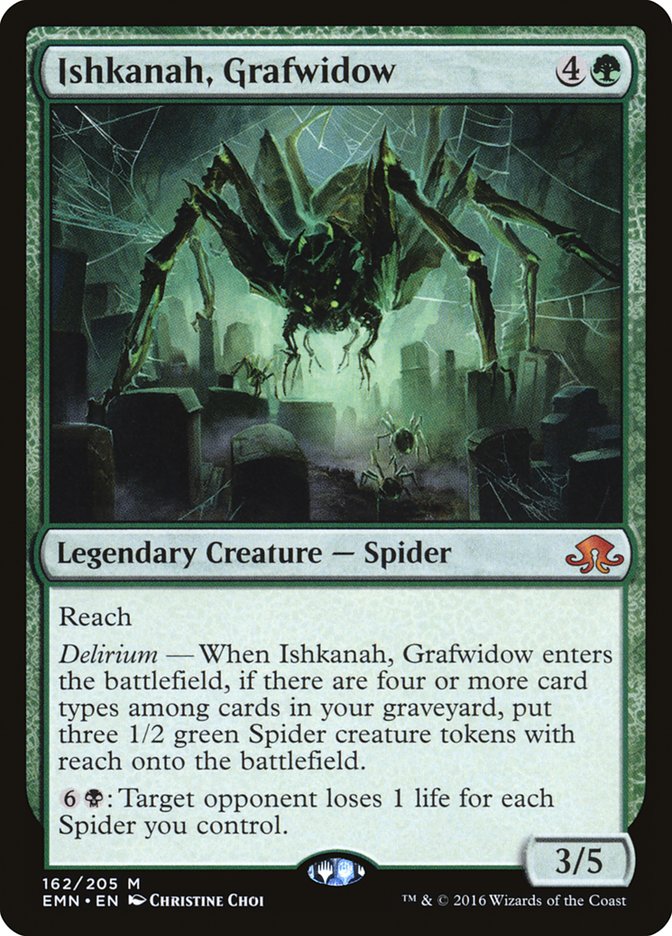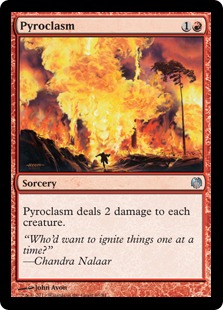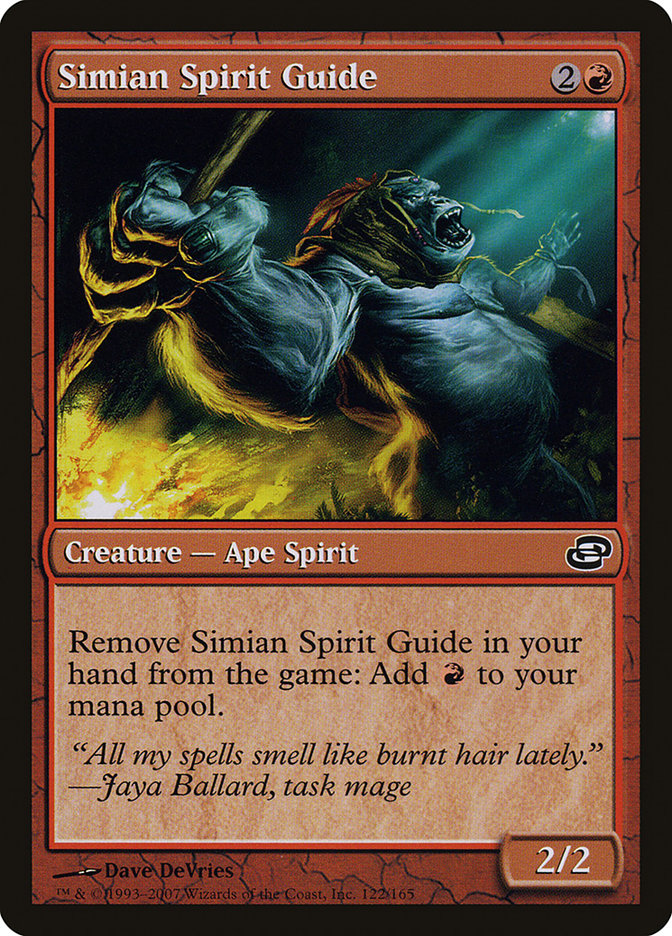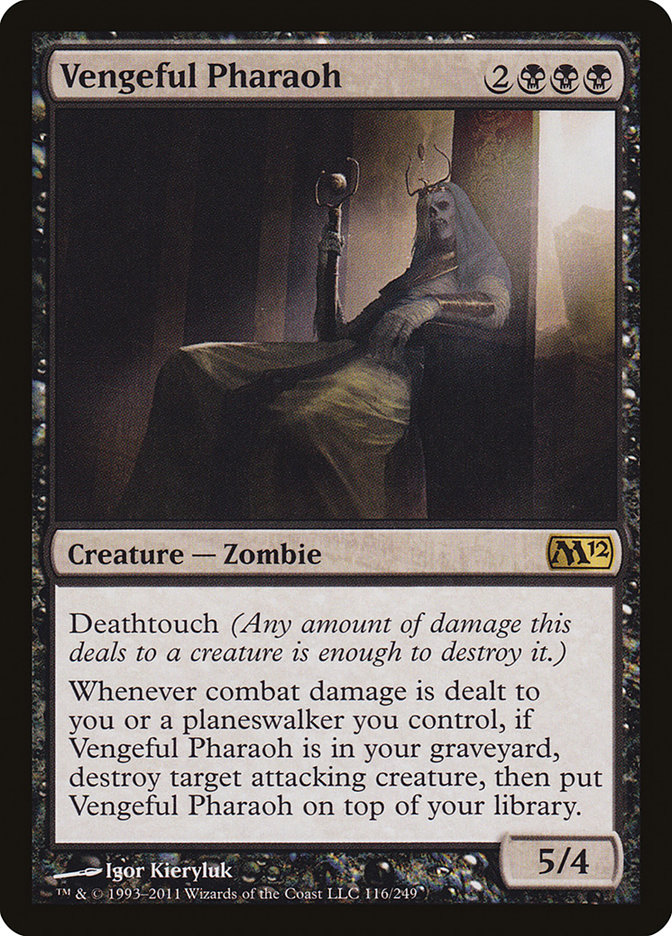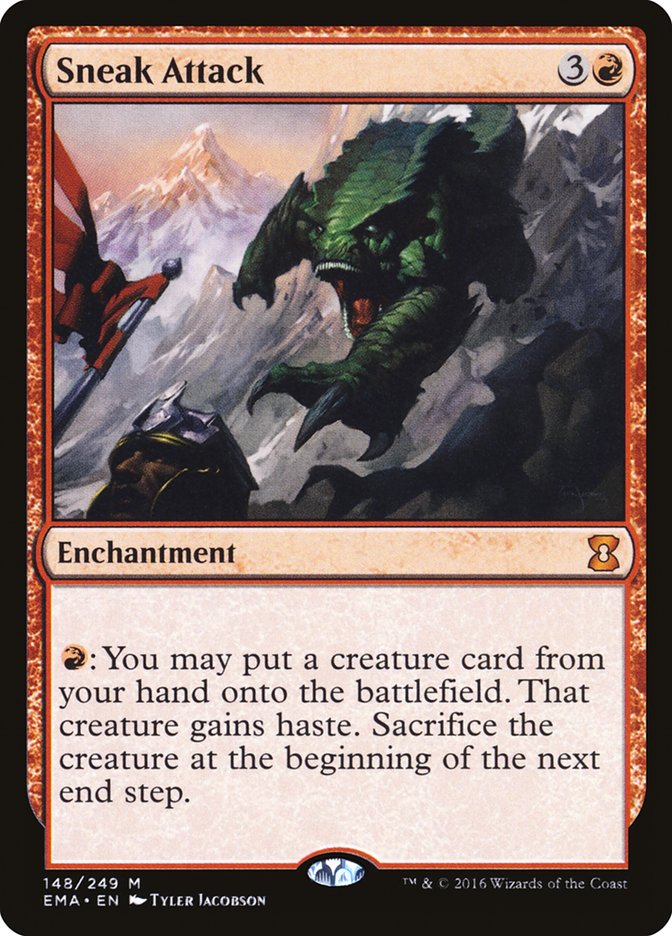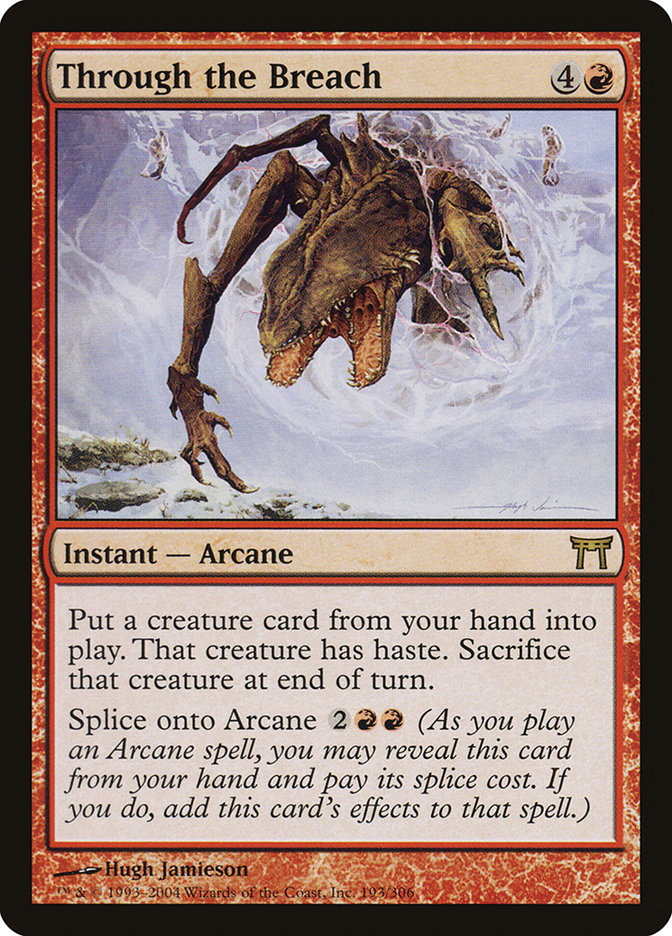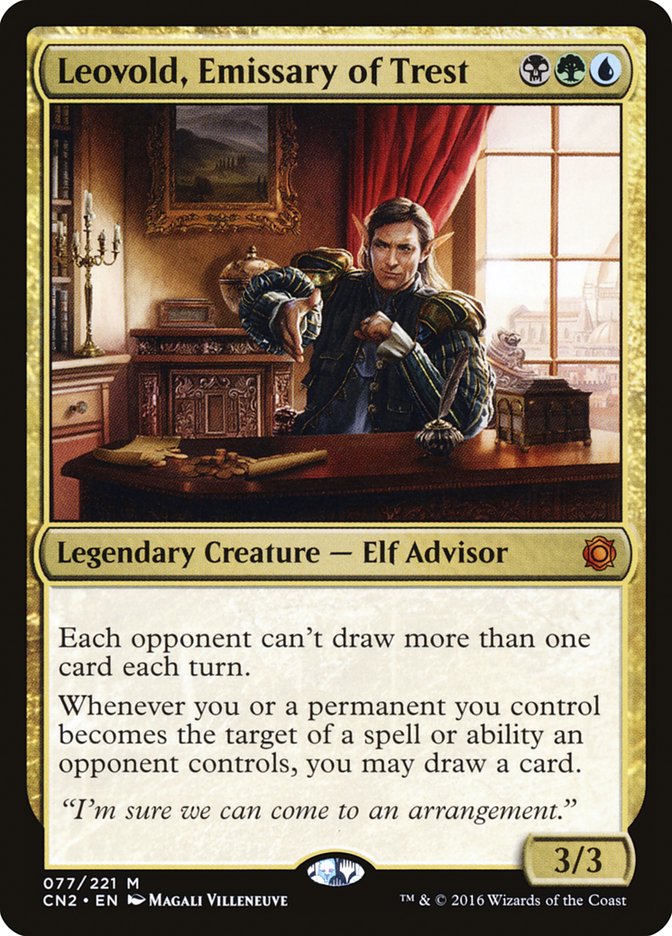We’re solidly into the current release cycle, and everyone’s very comfortable with Kaladesh‘s role in every Constructed format. Standard seems to have settled, and Modern…just keeps being Modern.
Aside on Modern: Modern is pretty amazing right now. During the broadcast for #SCGCOL, a comment was made about Modern being healthy and skill-testing, and the chat kind of lost it [Get out of here!—Ed.], mostly quoting that with Kappa images, indicating that they didn’t believe the statement. I don’t get how you can seriously disagree with that. Yes, there are enough decks that you can’t be prepared to beat all of them, so any player can lose a match against the wrong deck no matter how well they play, but just look at the results of Modern tournaments lately.
Recently I’ve watched or played in high-profile Modern tournaments that were won by Grixis Delver, Skred Red, Spirit Company, and G/W Tron, just off the top of my head. None of those are decks I’d even think to mention if someone asked me to list the top ten or even twenty Modern archetypes. I can’t think of any other format I’ve ever seen that’s ahead of current Modern on diversity and testing skill.
Look, I should have started here. Tom Ross’s results by themselves make a pretty compelling case that the format is both diverse and skill testing. He can win with seemingly any deck!
Creatures (7)
Planeswalkers (6)
Lands (19)
Spells (28)
- 3 Oblivion Stone
- 4 Sylvan Scrying
- 4 Chromatic Sphere
- 4 Chromatic Star
- 2 Relic of Progenitus
- 3 Path to Exile
- 4 Expedition Map
- 4 Ancient Stirrings
Sideboard

Spells (32)

And he’s not the only one. The same people keep doing well in Modern. Some, like Tom Ross or Mike Sigrist, do well with a wide variety of decks because they know the format well, and others, like Corey Burkhart or (at least for a while recently) Jeff Hoogland, do well with a single deck they know really well.
I get that a lot of people didn’t like the Splinter Twin banning or don’t like where Modern is, but I don’t know how you can even argue that it’s not the most diverse it’s ever been.
Anyway, what I want to do this week is keep tabs on the little developments we’re seeing as the formats mature. This Standard, disappointingly, really doesn’t feel like a brewer’s format. There are a few good decks, and people keep tweaking them a little. Winning in this Standard format isn’t about “breaking it.” It’s just a game of inches–knowing the latest adjustments, choosing the last few slots, and metagaming the properly positioned good deck.
Standard
This weekend didn’t feature any really huge Standard tournaments. There was a Team Limited Grand Prix in Rotterdam and a Modern Open in Columbus. The Standard Classic in Columbus featured a W/U Flash mirror in the finals. That’s important to remember, but only with a note that the Classics aren’t as large as the main event and many of the players missed the second day of competition at the corresponding Open, so I’d take results in these events with a grain of salt. No disrespect to anyone in particular intended; it’s just the nature of the event.
Jack Kiefer beat Josh Cho in the finals of a 74-card mirror (in which he had Declaration in Stone over Thalia, Heretic Cathar). Their most noteworthy inclusion is Revolutionary Rebuff, a card that usually wasn’t played earlier because it’s relatively narrow and weak, very bad against aggressive Vehicles decks in particular, but it’s a perfect answer to Ishkanah, Grafwidow against B/G Delirium in particular.
It can counter other spells, of course, but when you include it in your deck at this point, I believe you’re making a statement that you want to counter exactly Ishkanah, which is the most likely way the deck has to lose against B/G Delirium. It’ll be great against any other expensive spells, of course, but Ishkanah is the one you otherwise can’t deal with that really needs an answer, whereas the deck was already prepared for something like Archangel Avacyn with Stasis Snare.
Steve Rubin finished fourth with B/U Zombies with the notable inclusion of two Mindwrack Demons. This has become common in B/G Delirium as an enabler that also blocks Archangel Avacyn, Smuggler’s Copter, and Spell Queller, but it’s unusual to see it in this kind of deck because Delirium is substantially less likely. Steve’s made some changes to manage that, like the inclusion of a pair of Sinister Concoctions (which, because he has only a single land that doesn’t tap for black, play excellently with Voldaren Pariah). While Mindwrack Demon may be somewhat more likely to damage the B/U player, it’s also more likely to mill cards that are active in the graveyard, as this deck has four each of Scrapheap Scrounger, Haunted Dead, and Prized Amalgam.
Looking beyond this tournament, there’s recently been a small resurgence of Aetherworks Marvel, which goes in a slightly different direction from the (largely unsuccessful) Marvel decks at the Pro Tour. The newer version eschews Ulamog entirely, instead looking to hit Emrakul, the Promised End; Ishkanah, Grafwidow; and Chandra, Flamecaller. These cheaper threats are castable and, as we’ve seen from B/G Delirium, very commonly good enough to win the game anyway. This deck can still go over the top of the midrange decks in the format, with Aetherworks Marvel hitting a steady string of Emrakuls and plays in the five-to-seven-mana range while building more of a consistent backup plan.
This direction wasn’t viable for the Pro Tour because other Aetherworks Marvel decks would go over the top of this and every five-to-seven card in the deck would essentially be a blank, but the format as it’s developed simply doesn’t require going as big, so this is something to watch.
Creatures (16)
- 2 Pilgrim's Eye
- 1 Kalitas, Traitor of Ghet
- 2 Mindwrack Demon
- 2 Tireless Tracker
- 1 Emrakul, the Promised End
- 3 Ishkanah, Grafwidow
- 4 Grim Flayer
- 1 Noxious Gearhulk
Planeswalkers (4)
Lands (23)
Spells (17)

B/G Delirium has settled on the control end of its own spectrum. People aren’t playing Verdurous Gearhulk, Blossoming Defense, and large numbers of Kalitas, Traitor of Ghet. They’re playing Pilgrim’s Eye and Mindwrack Demon with three Ishkanah, Grafwidow; an Emrakul, the Promised End; and four Liliana, the Last Hope as their end-game plan.
Looking at the bigger picture, the format is currently around 25% W/U Flash, 25% B/G Delirium, 20-25% Red Aggro (Boros/Mardu/Rakdos), and maybe 10% Blue Control decks. This format is basically the exact opposite of Modern. In Modern, a deck being 20% of the format would be seen as a problem, but in Standard, there are multiple decks over that.
Modern
Tom Ross won #SCGCOL with G/W Tron, which is essentially the same deck as G/R Tron but replaces Pyroclasm with Path to Exile and mixes in some Rest in Peaces in the sideboard to accompany Relic of Progenitus.
Razorverge Thicket is substantially worse than Grove of the Burnwillows, especially because you ideally want your first three lands to be Urza lands, but I still think this is a great change for the current format.
Pyroclasm is a card I’ve been moving away from in the sideboards of both Lantern Control and Death’s Shadow, as it’s just not what it used to be. Noble Hierarch in particular is just not as popular as it used to be, and when it does show up, it tends to be in decks like Infect or Bant Eldrazi that don’t also have Birds of Paradise and Gavony Township and a plan to go wide, so they’re much stronger against Pyroclasm. Too many people who are trying to attack you are doing it with creatures like Thought-Knot Seer and Death’s Shadow, which don’t care about Pyroclasm.
Path to Exile, on the other hand, is perfect against expensive creatures and creature combo decks. While spot removal is generally too low-impact for a big-mana deck to want to go out of its way to accommodate something like this, Path to Exile is remarkably high impact because of the prevalence of creature combo in particular.
Creatures (28)
- 4 Golgari Grave-Troll
- 4 Stinkweed Imp
- 4 Simian Spirit Guide
- 4 Narcomoeba
- 4 Bloodghast
- 4 Prized Amalgam
- 4 Insolent Neonate
Lands (19)
Spells (13)

Michael Ayers’ second-place finish with Dredge featured one huge innovation that’s remarkably noteworthy: Simian Spirit Guide.
Previously Simian Spirit Guide wasn’t worth playing because the important spells (Faithless Looting and Insolent Neonate) cost one mana, but the addition of Cathartic Reunion really changes everything. Now, an ideal hand contains a land, Cathartic Reunion, Simian Spirit Guide, and two Dredge cards. A second land would be even better so that you can eventually dredge Life from the Loam, but with one you’ll still be able to pick up a Dakmor Salvage at some point. With this hand, there’s a very good chance that you’ll dredge around seventeen cards on the first turn, which far exceeds anything the deck is otherwise capable of.
Even when you don’t have Cathartic Reunion, Simian Spirit Guide still speeds you up by a turn a large portion of the time by allowing you to Flashback Faithless Looting (which you didn’t need to have drawn; you could have dredged it after leading with an Insolent Neonate) on turn 2, again jumpstarting your gameplan.
Dredge is incredibly powerful, but its biggest weakness in Game 1 was that the fastest decks could race it. Simian Spirit Guide might make that much harder to do.
I’d also like to call out the one Vengeful Pharaoh in the sideboard.
This isn’t a new piece of tech, but it’s one I believe a lot of players still aren’t using. As a Death’s Shadow player, let me just note that this card is a real nightmare, and I really think it’s worth the slot.
Creatures (27)
- 4 Noble Hierarch
- 2 Spellskite
- 3 Drowner of Hope
- 2 Eldrazi Skyspawner
- 4 Eldrazi Displacer
- 4 Reality Smasher
- 4 Thought-Knot Seer
- 4 Matter Reshaper
Planeswalkers (1)
Lands (23)
Spells (9)

Adam Fronsee’s sixth-place Bant Eldrazi deck featured a couple of odd twists. First, there are four copies of Chalice of the Void, a card we’ve seen in Eldrazi decks before but which Bant Eldrazi usually doesn’t play. As is, Adam has twelve one-mana spells in his own deck. I’m honestly not sure where he brings this in and where he decides it’s likely to hurt him as much as his opponents, but there are definitely some decks that are really crippled by it. I also wonder how often his plan is to bring it in and cast it as a four-mana spell, as Spellskite is the only card in the maindeck that Chalice of the Void on two counters, and that could easily come out. It’s possible that this rather than X=1 is the main plan, but that feels somewhat too slow to me in most spots.
The other unusual inclusion is Ajani, Mentor of Heroes. This card won’t do anything against a large portion of the field, but it should be absolutely backbreaking against black midrange in particular and should perform well in the mirror and against anyone trying to play a control game without counterspells.
Legacy
Creatures (15)
- 4 Simian Spirit Guide
- 2 Emrakul, the Aeons Torn
- 2 Inferno Titan
- 3 Griselbrand
- 2 Worldspine Wurm
- 2 Combustible Gearhulk
Planeswalkers (2)
Lands (19)
Spells (24)

I didn’t necessarily expect to find any sweet developments in Legacy, but I was pleasantly surprised by Kasey Walton’s second-place Mono-Red Sneak Attack deck, the latest version of All-In Red. This deck plays the typical red disruption package of eight lands that tap for two mana (on turn 1; he actually goes even further with the addition of two Sandstone Needle) with Simian Spirit Guide and Lotus Petal to cast either Chalice of the Void or Blood Moon on turn 1.
From there, he’s looking to use Seething Song to cast either Sneak Attack or Through the Breach and deploy any of a wide variety of sweet creatures, including Combustible Gearhulk in a deck that can easily (though not reliably) deal the full twenty if the opponent chooses to take the damage, making that a risky enough proposition that this should usually just come with three new cards.
This deck’s new cards don’t stop there, as Kasey has the full four Chandra, Torch of Defiance between his maindeck and sideboard, a card which can come down fairly easily on turn 2, particularly thanks to the inclusion of Sandstone Needle. From there, its mana ability allows easy casting of Through the Breach, Sneak Attack, and, more importantly, Combustible Gearhulk and Inferno Titan, for when playing more like a Modern “big spell” deck is good enough.
One other small thing to be aware of, particularly because it’s from a Commander product and some players may not follow those closely, is the addition of Leovold, Emissary of Trest in some Shardless Agent or other Sultai Control decks. I’m not sure exactly how good it is, but it’s a new card that’s showing up some.
Overall, I think the most exciting recent innovation is the addition of Simian Spirit Guide to Dredge. It may ultimately prove too inconsistent, but on paper that would surprise me, and I’d guess that it substantially improves the deck. If we weren’t there before, I hope this tips things over to the point where we see a banning of Golgari Grave-Troll and/or Simian Spirit Guide in Modern in the near future.




